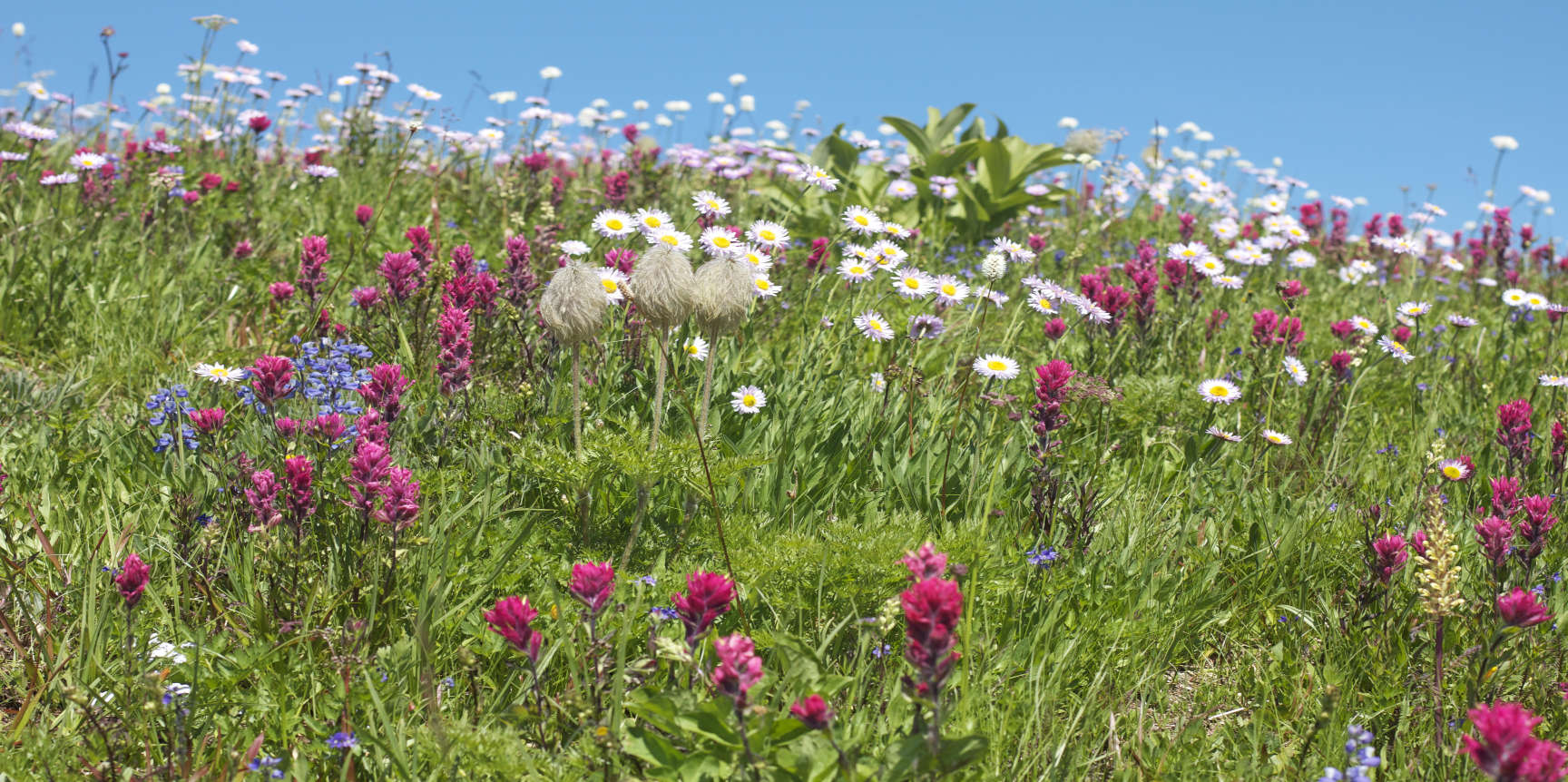Climate Change and Phenology

What controls the wildflower phenology in high mountain meadows? The timing of key life events like reproduction (i.e. phenology) is tightly linked to climate. For example, alpine wildflowers emerge and flower within a few weeks of snow disappearance and complete their life-cycles before the frost in early autumn. Because annual variability in snow disappearance is large, the timing of seasonal wildflower displays also varies annually, influencing visitation and staffing needs in areas famous for their displays of wildflowers (like Mt. Rainier National Park). Additionally, as climate change causes earlier snow disappearance, wildflowers that cannot shift their phenology to match this altered “climate window” may decline, as could other species (e.g. pollinators, bears) whose activities do not shift in concert with the plants whose pollen, nectar, seeds or berries they rely on. Thus, resource managers and conservation biologists are interested in understanding the link between climate and wildflower phenology, as well as in generating long-term annual records of wildflower phenology.
In collaboration with the National Park Service, current and former graduate students, and other Hille Ris Lambers lab affiliates, we have used many approaches to understanding the impacts of climate change on snow dynamics (a strong driver of wildflower phenology in our system), the link between snowmelt and wildflower phenology, and the implications of earlier snowmelt and shifts in wildflower phenology for National Park visitation, pollinators, and patterns of co-flowering. Please check out our external page MeadoWatch website for more details on our citizen science program MeadoWatch.